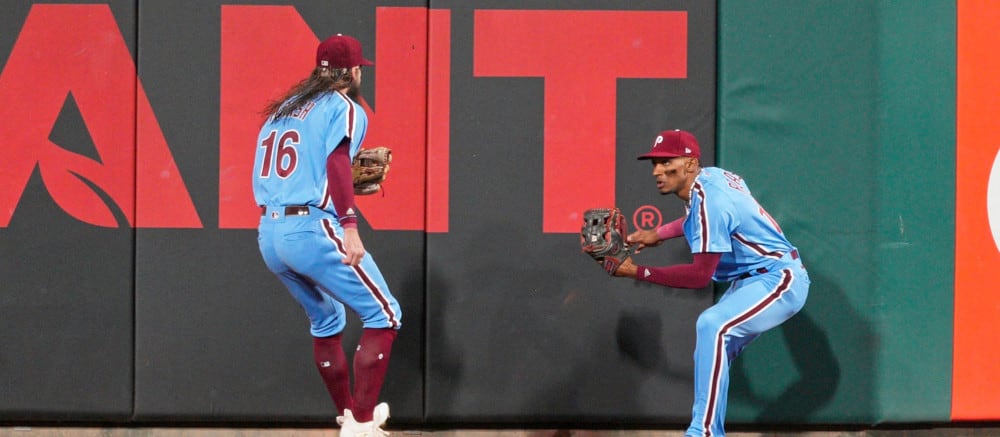Several spots remain up for grabs as spring training begins — perhaps even more than usual given the number of starting-caliber free agents who remain unsigned. Some of these job battles involve players going fairly early in the draft, while others could see the winner suddenly see a big jump in projected playing time and emerge as a useful deep-league option. This season, we've elected to split up the Spring Training Job Battles series by division rather than by league, in order to bring you in-depth coverage while keeping the articles to a digestible length. Ryan Boyer is handling the American League this season, with his article on the AL East out yesterday.
Note: the number in parenthesis is the player's NFBC ADP since 2/1
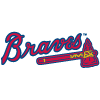 Atlanta Braves
Atlanta Braves
Catcher/Left Field/Designated Hitter: Sean Murphy (140), Marcell Ozuna (151), Jarred Kelenic (217), Travis d'Arnaud (491), Jordan Luplow (undrafted)
Atlanta manager Brian Snitker has generally preferred not to platoon, so it's perhaps no surprise to see the team suggest that Kelenic is in line for everyday at-bats in left field. Then again, Kelenic is a career .189/.255/.311 hitter against southpaws, and the team isn't completely devoid of alternatives. None of these spots are up for grabs if the team stay true to their word — Murphy will be the catcher, Kelenic the left fielder and Ozuna the DH as often as each player can handle — but we can't rule out Kelenic playing his way into a platoon over the next few weeks.
Getting
Several spots remain up for grabs as spring training begins — perhaps even more than usual given the number of starting-caliber free agents who remain unsigned. Some of these job battles involve players going fairly early in the draft, while others could see the winner suddenly see a big jump in projected playing time and emerge as a useful deep-league option. This season, we've elected to split up the Spring Training Job Battles series by division rather than by league, in order to bring you in-depth coverage while keeping the articles to a digestible length. Ryan Boyer is handling the American League this season, with his article on the AL East out yesterday.
Note: the number in parenthesis is the player's NFBC ADP since 2/1
 Atlanta Braves
Atlanta Braves
Catcher/Left Field/Designated Hitter: Sean Murphy (140), Marcell Ozuna (151), Jarred Kelenic (217), Travis d'Arnaud (491), Jordan Luplow (undrafted)
Atlanta manager Brian Snitker has generally preferred not to platoon, so it's perhaps no surprise to see the team suggest that Kelenic is in line for everyday at-bats in left field. Then again, Kelenic is a career .189/.255/.311 hitter against southpaws, and the team isn't completely devoid of alternatives. None of these spots are up for grabs if the team stay true to their word — Murphy will be the catcher, Kelenic the left fielder and Ozuna the DH as often as each player can handle — but we can't rule out Kelenic playing his way into a platoon over the next few weeks.
Getting Kelenic out of the lineup against lefties would also be a way to get d'Arnaud more plate appearances, something the team will want to do if the 35-year-old looks more like the player who posted a 120 wRC+ in 2022 than the one who had an 83 wRC+ last year. D'Arnaud could DH and push Ozuna to left field, though there's a reason Ozuna only played 14 innings in the field last season. A reinvigorated d'Arnaud could also push for more of an equal timeshare with Murphy behind the plate. Murphy's 129 wRC+ led all catchers (min. 400 plate appearances) last season, but he hit just .159 with four homers after the break. If Kelenic proves to need a platoon partner and playing Ozuna in the field isn't an option, non-roster invitee Jordan Luplow and his career 124 wRC+ against southpaws could earn a roster spot, but in a role which wouldn't have relevance in many leagues.
Fifth Starter: Bryce Elder (457), AJ Smith-Shawver (498), Reynaldo Lopez (575)
In theory, this job should comfortably be Elder's, as he held down a rotation role for 31 starts last season and finished with a 3.81 ERA. He struck out just 17.5 percent of opposing batters, however, and while his groundball rate (49.9 percent) was well above average, it was far from elite. It's no surprise, then, that a team as good as Atlanta isn't just handing him and his 4.81 SIERA a spot without competition, with general manager Alex Anthopoulos stating in December that Elder, Smith-Shawver and Lopez would all get a look.
Smith-Shawver made seven appearances — five starts and two relief outings, one of which came in the playoffs — as a 20-year-old last season. His strikeout, walk and groundball rates were all worse than league average, but he's a quick-rising prospect with more strikeout upside than Elder who could steal the job this spring if he shows enough progress. Lopez has a career 4.73 ERA as a starter and a 3.01 ERA out of the bullpen, and his lone start in the last two seasons came as an opener. The team plans to stretch him out this spring, though that may merely be as a way to keep the possibility of him serving as the team's sixth or seventh starter available as injury insurance.
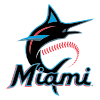 Miami Marlins
Miami Marlins
Shortstop: Jon Berti (530), Nick Gordon (694), Jacob Amaya (751), Vidal Brujan (714), Free Agent
The Marlins reportedly don't play to enter the season with Berti atop the shortstop depth chart, but with Amed Rosario signing with Tampa Bay on Tuesday, the top remaining free agents are Tim Anderson (their preferred target according to Jon Morosi) and Nick Ahmed, who aren't clear upgrades over the late-blooming utility man. Berti cleared the 2-fWAR threshold in under 425 plate appearances for the second straight season last year and hit .294, but with just seven homers and a sudden drop from 41 to 16 steals, he didn't stand out for fantasy purposes.
Berti's in-house competition isn't much to speak of. Gordon had a fair amount of hype this time a year ago on the back of his 111 wRC+ in 2022, but that came with just nine homers and six steals in 138 games. He's also unlikely to be a serious candidate for more than the occasional start at shortstop, as he played far more second base and outfield than shortstop in Minnesota and is unlikely to move up the defensive spectrum following a lost season in which he fractured his tibia. Amaya is a glove-first prospect, but the 25-year-old has just four MLB games under his belt and a 90 wRC+ in 395 career games in the three highest levels of the minors. Brujan was once a top prospect with a ton of speed and enough of everything else, but his stock has plummeted after he hit .157/.218/.221 in 99 major-league games across three seasons with the Rays.
Designated Hitter: Avisail Garcia (733), Trey Mancini (748)
The Marlins used a dedicated DH for large parts of last season, with Jorge Soler earning 102 starts at that spot, but he's now a Giant. Garcia occupies the top of our DH depth chart for the Marlins at the moment, but drafters are completely uninterested in the 33-year-old, who's coming off a pair of injury-plagued seasons in which he hit .215/.260/.316 with 11 homers and six steals in 135 games. He's under contract for two more seasons at $13.3 million per year, but his .820 OPS and 29 homers in 2021 look like relics from the distant past at this point. Drafters similarly don't want any part of non-roster invitee Mancini, who hit .234/.299/.336 with four homers in 79 games last season. He owned a career 111 wRC+ prior to that point, so a rebound to respectability can't be ruled out, but the Marlins could really use someone like Brandon Belt, J.D. Martinez or Adam Duvall just to avoid a black hole at this spot.
Third/fourth/fifth starter: Braxton Garrett (202), Edward Cabrera (302), Trevor Rogers (360), A.J. Puk (509), Max Meyer (528)
Jesus Luzardo and Eury Perez are safe atop the Marlins' rotation, and Garrett should be as long as the shoulder soreness he showed up to camp with turns out to be a February issue and not an April issue. He's already throwing, which gives reason for optimism in that regard. Even if he's good to go, the Marlins' rotation picture isn't 100 percent clear. Cabrera has great stuff, and his 4.01 ERA in 43 appearances (41 starts) across his first three seasons is perfectly acceptable, but he also owns a career 14.0 percent walk rate. Combined with his history of arm injuries, it's exactly the sort of profile which begs for a move to the bullpen, though that's seemingly not yet the plan. Rogers broke out with a 2.64 ERA and a 28.5 percent strikeout rate in his age-23 season back in 2021, but he stumbled to a 5.47 ERA in 2022 while his strikeout rate dipped to 22.2 percent and then spent nearly all of 2023 on the shelf with biceps and lat issues. He entered spring healthy, making him a potential sleeper, but there's no guarantee he opens in the rotation.
Puk was a premium prospect as a starter, going sixth overall in the 2016 draft, but injury issues forced him to the bullpen prior to his arrival in the majors. He's had success there to the tune of a 3.72 ERA and 3.07 SIERA in 147.2 career innings, but the Marlins are stretching him out as a rotation option this spring, accepting the health risks which could come with that. Speaking of premium prospects with health concerns, 2020 third-overall pick Meyer will be back this season after undergoing Tommy John surgery in August of 2022. He flashed plenty of upside before the injury, but the Marlins won't push him quickly this spring and will likely have him on some sort of innings limit. It wouldn't be a surprise to see him fail to make the Opening Day rotation yet still make a healthy number of starts later in the year.
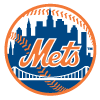 New York Mets
New York Mets
Third Base/Designated Hitter: Brett Baty (432), Mark Vientos (635), DJ Stewart (716)
Just 12 months after fielding the most expensive team in history, the Mets could enter Opening Day with a pair of 24-year-olds in the starting lineup whose combined career OPS barely exceeds .600. Both Baty and Vientos (particularly the former) had a fair amount of prospect pedigree, but when power-first prospects flop, they can flop hard. Baty hit far too many grounders last season, homering just nine times in 108 games while striking out 28.0 percent of the time. Vientos hit the same number of homers in less playing time, but nine in 65 games is nothing special and isn't nearly enough when combined with awful plate discipline (30.5 percent strikeout rate, 4.3 percent walk rate), no speed and poor defense. DJ Stewart could earn starts at DH ahead of Vientos against righties, though the 30-year-old's 130 wRC+ in 58 games last year was 31 points above his career average prior to that point and came with a 30.3 percent strikeout rate. This is another roster for which even the lesser free-agent bats would represent a significant upgrade.
Fifth starter: Adrian Houser (628), Tylor Megill (649), David Peterson (723), Mike Vasil (741), Joey Lucchesi (742), Jose Butto (743)
Perhaps saying that the Mets have just one spot up for grabs in their rotation is too charitable, as it's not as if Jose Quintana, Sean Manaea and Luis Severino have been stable rotation pillars in recent seasons. Reports also emerged Wednesday that Kodai Senga is already dealing with arm fatigue. There could be plenty of starts available in a pitcher-friendly park in Queens, but none of the options have appealed to NFBC drafters. Houser was traded away by the Brewers, who didn't want to pay him $5 million in his final year of arbitration. His 17.6 percent strikeout rate and 9.3 percent walk rate over the last four years are both poor, but he kept the ball on the ground well enough to earn a palatable 4.13 ERA. Megill's strong peripherals led to a 3.71 SIERA across two partial seasons in 2021 and 2022 despite a 4.73 ERA, but those peripherals backed up in a big way last year, leading to a 5.07 SIERA.
Those two are the best of an uninspiring bunch. Peterson struggled to a 5.03 ERA and 1.57 WHIP in 111 innings last season and won't be a factor for at least the first month or two after hip surgery. Vasil isn't a non-prospect but has yet to crack James Anderson's top 100 and needs to take a step forward after struggling to a 5.30 ERA and 11.7 percent walk rate in 16 Triple-A starts last season. Lucchesi's 2.89 ERA in nine starts last season may remind you of his somewhat promising early career, but his performance was panned by the ERA estimators, including a 5.15 SIERA. Butto's 3.64 ERA and 5.11 SIERA in nine outings (seven starts) similarly failed to move drafters.
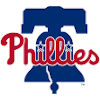 Philadelphia Phillies
Philadelphia Phillies
Left Field/Center Field: Whit Merrifield (271), Brandon Marsh (465), Johan Rojas (491), Cristian Pache (undrafted)
Merrifield may have the highest draft position by some margin among this group, but that's a reflection of his perceived value had he landed somewhere where he could be an everyday player at second base. That won't be the case in Philadelphia, as Bryson Stott is unlikely to cede more than the occasional start against lefties. Merrifield's best shot at regular at-bats will therefore come in the outfield, but given that the 35-year-old's last season with a wRC+ above 93 was back in 2020, he's likely looking at a part-time role as long as the Phillies' young outfielders are able to earn regular at-bats.
Marsh's Opening Day availability is at risk due to arthroscopic knee surgery, but he should start against every righty in either left or center once healthy. He only started four games against lefties over the final three months of the season, however, and considering he's a career .223/.278/.312 hitter against same-sided pitching (with a 39.5 percent strikeout rate), the Phillies may want to keep him in a strict platoon. That platoon will likely be with Merrifield in left, but there's a chance Marsh moves back to center with Merrifield handling left field on a regular basis if neither Rojas nor Pache looks ready for regular at-bats. Rojas has an excellent glove and plenty of speed, but while he hit 302/.342/.430 in his 59-game debut last year, it was fueled by a .410 BABIP. A poor spring could see him open the year in the minors. Pache is probably the player most hurt by Merrifield's arrival. A glove-first right-handed outfielder like Rojas, Pache could have been set to platoon with Marsh in left but now finds himself fighting for a roster spot.
Closer: Jose Alvarado (200), Orion Kerkering (490), Matt Strahm (582), Jeff Hoffman (592), Gregory Soto (683), Seranthony Dominguez (706)
Phillies manager Rob Thomson has taken a fairly progressive approach to the late innings since taking over in June of 2022. Dominguez led the team in saves the rest of that season but only had nine of the team's 31 over that stretch (29 percent). Alvarado had just two during Thomson's tenure in 2022 and a mere 10 last season, with Craig Kimbrel (now an Oriole) leading the way with 23, just 51 percent of the team's 45. In other words, there's no evidence to suggest any Phillie will earn much more than half the team's saves under Thomson's watch. Still, it's understandable why some drafters would make the bet that Alvarado will change Thomson's mind. His 1.70 ERA since the day Thomson took over ranks fourth among all relievers (min 70 IP), and he leads that group in FIP (1.83) and xFIP (1.98) over that stretch.
If Thomson continues to use a more modern approach, there's a good chance one of the righties winds up leading the team in saves with a total which might not be much higher than 15. NFBC drafters give the edge to Kerkering, a 22-year-old with premium stuff and shaky command who shot through four levels of the minors last season before pitching three regular-season innings in the majors and 5.1 more in the playoffs. Hoffman could never figure it out at Coors Field, posting a 6.40 ERA in five years as a swingman, but after two more mediocre years in Cincinnati, he suddenly broke out to post a 2.41 ERA and 33.2 percent strikeout rate as a single-inning weapon for the Phillies. He emerged as one of Thomson's more trusted options, though he earned just one save. Dominguez saved 16 games as a rookie back in 2018 but has just 11 saves since then, and his strikeout rate dipped to a career-low 21.4 percent last season. It's unlikely one of the lefties who isn't Alvarado somehow tops the saves charts, but Strahm is interesting in deeper leagues or in leagues where his SP/RP eligibility is relevant. He started 10 games, won nine and saved two while posting a 3.29 ERA in 87.2 innings of work.
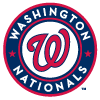 Washington Nationals
Washington Nationals
1B/LF/DH: Joey Meneses (454), Joey Gallo (586), Stone Garrett (636), Jesse Winker (735), Juan Yepez (741), Jake Alu (751), Alex Call (751)
When you project for fewer than 60 wins and don't even have a top-10 farm system, you wind up with quite a mixture of players vying for at-bats, a situation that's often particularly striking at the bat-first positions. None of these players deserve a second look in shallow formats, but those in deep NL-only leagues could find plenty of profit if they choose the player from this scratch-off ticket who winds up with 500+ plate appearances. Meneses showed what a such a player can do even in a poor lineup last season, turning his 657 plate appearances into 71 runs and 89 RBI despite a forgettable .722 OPS. Given that he homered just 13 times, attempted zero steals and is heading into his age-32 season, it's no surprise drafters are uninterested, and a repeat of a similarly bland stat line could see the Nationals turn to other options.
Gallo found a team willing to pay him guaranteed money this winter, but his $5 million deal doesn't necessarily lock him in as a starter. He yet again produced an incredible barrel rate (18.6 percent) last season and homered 21 times in 332 plate appearances for the Twins, but that came with a 42.8 percent strikeout rate. He's the closest thing we've ever had to a lock to hit below .200, having last finished above that threshold in 2019, but in deep leagues which don't use batting average, he's usable as a probably strong-side platoon player. Garrett was reportedly expected to take things easy in camp after breaking his fibula in August but is already a full participant. He's a potential late bloomer, as the 28-year-old has just 355 plate appearances to his name but has hit a promising .271/.335/.477, though that comes with a 30.7 percent strikeout rate.
It only goes downhill from there. Winker's wRC+ dropped 40 points from 2021 to 2022 and a further 43 points in 2023. The non-roster invitee is now on his fourth team in four years but feels much healthier now that he's more than a year out from his knee and neck surgeries, though any role he earns will be limited to strong-side platoon work. Yepez was an above-average hitter in 76 games as a rookie for the Cardinals in 2022 but barely earned big-league playing time in 2023, posting a .546 OPS in 28 games. Alu (.571 OPS in 51 games) and Call (.614 OPS in 128 games) didn't fare much better.
Third Baseman: Nick Senzel (518), Carter Kieboom (750), Ildemaro Vargas (undrafted)
At-bats at the hot corner in Washington will likely to go a former first-round pick whose career has been derailed by injuries, unless journeyman utility infielder Vargas is the only one standing by Opening Day and wins the job by default. He's a lifetime .246/.287/.367 hitter who's never stolen more than three bases or hit more than six homers in a season, so it's no surprise he's found zero takers even in very deep NFBC leagues. Of the vaguely promising options, Senzel has more supporters. The 2016 second-overall pick is now a 28-year-old with a lifetime 77 wRC+ in 377 major-league games. His 2023 season counts as a relative success, as he remained healthy enough to play in 104 games and hit a career-high 13 homers, but he couldn't do better than a .696 OPS. Kieboom was selected 28th overall that same year and owns an even worse 65 wRC+ in 133 career MLB contests. He's missed tons of time due to injury, including all of 2022 while recovering from Tommy John surgery and most of 2023 with shoulder, lat and oblique issues.
Closer: Kyle Finnegan (271), Hunter Harvey (324), Tanner Rainey (741)
Finnegan was a serviceable second closer in most fantasy leagues last season, finishing with a 3.76 ERA and 28 saves, but his 21.9 percent strikeout rate is hardly vintage closer material. Finnegan has never been above 26.1 percent in that mark, and his walk rates have been at best league average. Harvey finally had a (mostly) healthy season last year and looked like the Nationals' best reliever. He struck out 28.5 percent of opposing batters and walked just 5.5 percent en route to a 2.82 ERA in 57 appearances, picking up 10 saves. Harvey had seemingly overtaken Finnegan right before the All-Star break, but he then missed a month with a right elbow strain and earned just one save the rest of the way. Rainey earned 12 saves in the first half of 2022 before undergoing Tommy John surgery, a procedure which kept him out until late September of last year. With a healthy and effective spring, he could move his way up the closer depth chart.


